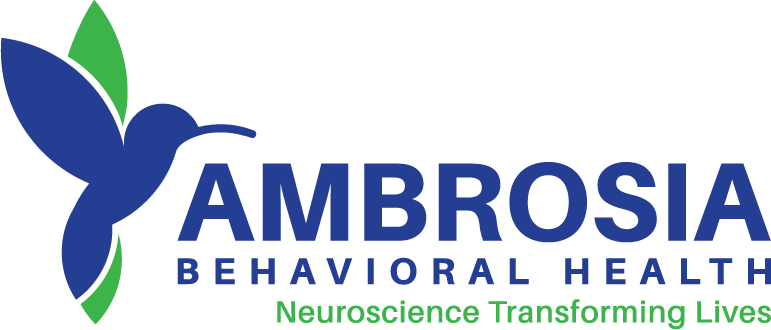The journey towards recovery from a synthetic opioid such as Methadone is a long road towards sobriety. Methadone is used as a legal detoxifier as a painkiller in therapy for people quitting an opioid addiction, such as one to heroin. This method allows the addict to receive Methadone on an “as needed” basis within specified guidelines, therefore; permitting them to regulate their detoxification. Methadone maintenance therapy is the usual method of treatment designed as an effective action in a patient’s primary goal. Giving an example, the fundamental goal for a recovering addict in treatment is soundness of judgment and being sober. Methadone is used in place for heroin (or any other opioid), acting relatively to the drug of abuse but transpiring, allowing the addict to cease off from heroin.
The signs and effects of methadone abuse and will guide you on acknowledging abusive symptoms and risks to help someone in need. The report also covers what withdrawal from Methadone can be. Finally, what Ambrosia Treatment Center has to offer in the ways of detoxification is the crucial first step toward recovery.
Likely, in these steps, If you desire only to read about the detoxification process, please scroll down and begin reading the section titled “Our Methadone Detox Program.” If not, please continue to read on.
We wish everyone struggling with addiction the absolute best of luck, but with help from us here at Ambrosia Treatment Center, you may not require a chance. Our staff and top-notch doctors are ready, willing, and able to help you today.
What type of Drug is Methadone?
It was first developed by German chemists as a painkiller during the late 1930s when the allies cut off the opium supply to Nazi Germany. Methadone is a synthetic opioid drug used medically as a pain killer and a substitute for addiction to Narcotics such as heroin.
Signs of Methadone Abuse
It is essential to recognize the signs of methadone abuse. It’s also important to note that any use, outside of legally prescribed, is abuse. Since the drug is legal or because you have heard that it’s not as potent as heroin does not mean that it is not extremely dangerous and highly addictive. The death toll of thousands of Americans is recorded every year due to methadone abuse.
Methadone has similar effects as morphine, but in Methadone’s case, the duration is much longer.
The long-term and short-term effects of methadone abusers are covered further down in this article, so what follows is merely a list of methadone abuse signs. Some of these signs can also be effects, but what follows are signs more easily detectable.
Methadone Abuse signs include:
- Lightheadedness
- Excess sweating
- The weakness of the body
- Half-opened eyes (if unusual)
- Dry mouth
- Nervousness
- Mood swings
- Itchiness
- Slurred speech
- Constricted pupils
Risks of Methadone Abuse
Methadone is used both medically and illicitly. Due to the steady increase in abuse, many physicians are taking a stand to prevent the dangerous effects of methadone abuse in their patients. In 1999, the CDC reported approximately 784 deaths from overdose of Methadone. In 2006, seven years later, a period during which big pharma mass-marketed a vast number of opioid prescriptions. A massive total of 5,406 Americans die at Methadone’s hand, which was a 600% increase.
The next year, in 2007, the death toll rose to 5,518. After seven years, the fatal methadone overdose count dropped to 3,500 in 2014. Although there was a 39% decrease in the death toll, Methadone overdose still caused over a quarter of opioid-related deaths that year, which caused America to break its record for drug deaths at the time.
In late 2003, the New York Times published an article about the growing dangers of Methadone. It illustrates how Methadone in the early 2000s became a huge problem nationwide and was the fastest-growing killer in Maine, North Carolina, and Florida.
“Overshadowing by the scope of the current drug overdose epidemic, our nation is facing is the fact that Methadone is still abused. Most of the abused Methadone comes from prescriptions, not from supervised maintenance therapy .“
Dr. Edward C. Covington, director of the chronic-pain rehabilitation program at the Cleveland Clinic in Ohio, has said the following, “Methadone is probably one of the few drugs that I’ve seen doctors almost kill patients with accidentally. It’s that hard to use when someone first starts to use them. If it’s on the street, we are going to be seeing some deaths.”. At the same time, Methadone has proven an excellent pain killer. It is only used in situations of severe and persisting pain due to its potential effects, including its addiction potential.
The risks that come with methadone abuse, both short-term and long-term, can be very severe. As with the signs of abuse, its risks are similar to those of other opioids.
The short-term risk of methadone abuse include:
- Urinary retention
- Drowsiness
- Low blood pressure
- Twitching and tremors
- Nausea and vomiting
- Cyanosis (slight blue appearance of lips or nails)
- Coma and death
The long-term effects of methadone abuse include:
- Depression
- Anxiety
- Hallucination
- Delusions
- Suicidal thoughts or actions
- Nerve and liver and brain damage
- Coma and death
Recognizing Methadone Abuse & Stepping In:
While Methadone is used to curb addiction and reduce cravings, it is also a heavily regulated drug. It is so regulated that patients prescribed in an outpatient setting have to go to a clinic daily to be administered a specific dose.
If you or loved one is abusing Methadone, whether they are a non-prescribed user or someone that abused his or her prescription, now is the time to take action. You can intervene and commence the process of support. You can step in and help yourself if you’re the one that is suffering from addiction. As with all drug substances, abuse soon leads to addiction. The reality is that one pill of Methadone could kill you. No high could be worth that. Period!
Stepping in and intervening to help someone you know has a problem is always easier said than done in most cases. We sincerely care about these people, and we do not want to harm them. Nonetheless, we love them enough to know they are hurting themselves at a rate in which death may occur. In such utmost cases, professional intervention is highly recommended.
When attempting to help someone you care about, keep these tips in mind:
- Do not call the person a drug addict or accuse them of being an abuser.
- Discuss and educate the person if they are taking any other medications or herbal remedies as these may interact with Methadone, causing health problems.
- Advice the person of the mistake and the possible consequences the drug will have in there lives.
- Do not request the person seeks aid. Just state your concerns.
- Maintain the relationship you already have with the person. Acting out of the norm will likely arouse suspicion.
- Encourage the possibility of aid, but do not be forceful.
Withdrawal from Methadone
Withdrawal from Methadone before leaving the closed setting is not recommended. Nevertheless, under some circumstances, it may be necessary. Giving an instance, a first-time drinker could likely achieve drunkenness with a beer or two. In contrast, an alcoholic, who has a high tolerance to alcohol, would require many more beers to achieve the same level of drunkenness.
Methadone withdrawal is noted to be one of the problematic forms of withdrawal because of how long the individual experiences the detox’s symptoms. Symptoms of methadone withdrawal usually start within 30 hours after your last exposure to the drug. For most users, the tolerance developed to Methadone is established expeditiously than other medications. This means that methadone abusers will need substantially more and more each time they use it. Take note that the higher one’s tolerance to Methadone at the time of withdrawal, the more severe the symptoms of withdrawal are.
Withdrawal symptoms are most similar to those of heroin or morphine. Still, possibly fortunate for the recovering addict, methadone withdrawal is not as intense as the drugs mentioned above.
Methadone withdrawal symptoms include:
- The chills
- Fever
- Depression
- Insomnia
- Anxiety
- Body aches
- Excessive sweating
- Increased heart rate
- Intense cravings for more Methadone
- Mood swings
Since methadone stores itself in fatty tissue and takes longer to leave the body than most substances. Also, they do not set in until five days after the last use. Thus, causing the detox process to be prolonged with withdrawal symptoms lasting up to six weeks.
Withdrawal symptoms are likely to occur and much more likely to be worse if an addict stops using without assistance. Opioids present one of the most dangerous withdrawal circumstances, and Ambrosia Treatment Center can provide all of the support needed for methadone addicts to begin the path to recovery. The very first step, as mentioned, is detoxification, which safely and effectively removes all traces of Methadone from the body.
Ambrosia Treatment Center Methadone Detox Program
This synthetic opioid analgesic was initially intended to treat opiate addiction, but one of the most substantial problems about this narcotic is that it is addictive itself.
The opiate epidemic has led to record addiction and overdose rates. In 2017, President Trump issued a public health emergency declaration in response to the widespread opiate pandemic. Young Americans are at the forefront of the epidemic.
The main reason for needing a methadone detox program is because, like other opioid medications, tolerance and dependence develop with repeated and prolonged use.
Opiates used among young adults doubled in the past fifteen(15) years and overdoses quadrupling. Overall, drug overdoses are the leading causes of accidental death in the country. Checking into our professional treatment center if attempting to detox from Methadone is strongly recommended.
What a Methadone Detoxification center offers:
At Ambrosia Treatment Center, we offer Methadone detox to our patients. We utilize medication-assisted therapy to limit your withdrawal symptoms. Our Florida based facilities provide the highest quality inpatient services for those that have a severe addiction, complex or co-occurring disorders, or multiple attempts of recovery. Ambrosia’s numerous Florida locations offer inpatient detox services that provide you with the highest level of care road to recovery. An outpatient methadone detox center allows you to return home at night but doesn’t provide constant supervision to monitor your symptoms, which is needed if addiction is severe.
An individual with intolerance or dependency on Methadone will demonstrate drowsiness, irregular heartbeat, confusion, mood swings, dangerously slow breathing, and tolerance to the drug. The long term side effects of chemical dependency on methadone range from impaired judgment, problems with coordination, lung infections to severe heart conditions.
Methadone Addiction Detoxing
Methadone has a different chemical structure than Morphine, Vicodin, Heroin, and other opiates. Still, the symptoms associated with dependency can be equally challenging to overcome, and thus recommend methadone detox. It’s essential not to lessen the consequences of methadone addiction simply because it’s a prescribed medication. The possibility of overdose and dangerous withdrawal symptoms are severe, and thousands of people suffer accidental deaths each year. Detoxing will require tapering off the drug, and generally, withdrawal symptoms won’t set in until after a day without the prescription.
Tolerance and dependence
Generally, as with other opioid medications, tolerance and dependence usually develop with related doses. There is numerous clinical evidence that tolerance to painkillers is less with Methadone contrast to other opioids. This may be due to its activity with the NMDA receptor. Methadone’s tolerance to the different physiological effects varies; tolerance to analgesic properties may or may not develop quickly/rapidly, whereas tolerance to constipation, sedation, and respiratory depression develops slowly (if ever).





